MAN RAY – PORTRAIT OF DORA MAAR


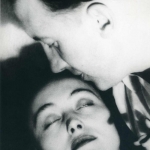
A poem by Paul Eluard “I cannot be known Better than you know me Your eyes in which we sleep

“I cannot make you understand. I cannot make anyone understand what is happening inside me. I cannot even explain it

“It is living and ceasing to live that are imaginary solutions. Existence is elsewhere.” Andre Breton Photo by Henry Cartier

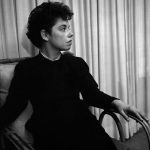
“I am a writer and I want to write.” ― Jane Bowles Fear and Hope “Like most people, you
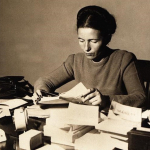
THE SIMONE DE BEAUVOIR EFFECT “I am incapable of conceiving infinity, and yet I do not accept finity.” SIMONE
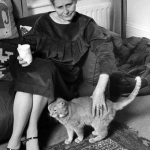
ONE WAY TO READ A BOOK In the opinion of the famous writer Doris Lessing there is only one


“I am a writer and I want to write.” ― Jane Bowles Fear and Hope “Like most people, you
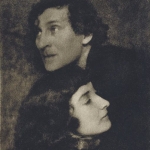
MARC AND BELLA CHAGALL ~ A COLORFUL LOVE “In our life there is a single color, as on an artist’s
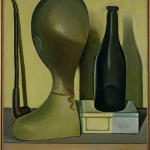
THE SURREALITY/REALITY OF GIORGIO MORANDI. Giorgio Morandi (1890 -1964) was an Italian painter and printmaker. “There is nothing more surreal,

I believe that nothing can be more abstract, more unreal, than what we actually see. We know that… the objective world… never really exists as we see and understand it… has no intrinsic meaning of its own, such as the meanings that we attach to it.
Giorgio Morandi (1890 – 1964)
Giorgio Morandi
Natura Morta, 1929

MARIA YAKUNCHIKOVA (1870-1902) WOMEN WITH A PASSION FOR ART The first female artist I want to introduce in the series

MARC AND BELLA CHAGALL ~ A COLORFUL LOVE “In our life there is a single color, as on an artist’s

Monique’s Passion ~ Living an Artful Life How did I end up living an Artful life? I want to start of by

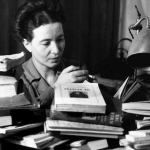
Some quotes by writer Simone de Beauvoir (1908-1986) “I wish that every human life might be pure transparent freedom.” “One

Monique’s Passion ~ Living an Artful Life How did I end up living an Artful life? I want to start of by

A poem by Paul Eluard “I cannot be known Better than you know me Your eyes in which we sleep


“I am a writer and I want to write.” ― Jane Bowles Fear and Hope “Like most people, you

MARIA YAKUNCHIKOVA (1870-1902) WOMEN WITH A PASSION FOR ART The first female artist I want to introduce in the series

THE SIMONE DE BEAUVOIR EFFECT “I am incapable of conceiving infinity, and yet I do not accept finity.” SIMONE

It is really curious how men, whom I otherwise look upon as honest, and who in other respects are not my enemies, lie monstrously, and are hardly conscious of it themselves, when they really get into a passion. Passion has an extraordinary power. How foolish, then, is the modern seeking after system upon system, as though help was to be found there; no, passion must be purified.
Soren Kierkegaard’s Journal, 1846

“I am a writer and I want to write.” ― Jane Bowles Fear and Hope “Like most people, you
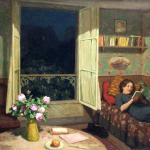
Series Women and their Passion for Books “What on earth could be more luxurious than a sofa, a book, and

MARC AND BELLA CHAGALL ~ A COLORFUL LOVE “In our life there is a single color, as on an artist’s

Ballet Mécanique (1924) was a project by the American composer George Antheil and the filmmaker/artists Fernand Léger and Dudley Murphy. Although the film was intended to use Antheil’s score as a soundtrack, the two parts were not brought together until the 1990s. As a composition, Ballet Mécanique is Antheil’s best known and most enduring work. It remains famous for its radical style and instrumentation as well as its storied history.
In concert performance, the “ballet” is not a show of human dancers but of mechanical instruments. Among these, player pianos, airplane propellers, and electric bells stand prominently onstage, moving as machines do, and providing the visual side of the ballet. As the bizarre instrumentation may suggest, this was no ordinary piece of music. It was loud and percussive –- a medley of noises, much as the Italian Futurists envisioned new music of the 20th century.
Source Wikipedia


Voltaire once said: “Illusion is the first of all Pleasures.” What is she thinking about, it makes you wonder if

“All truths are easy to understand once they are discovered; the point is to discover them.” Galileo Galilei Astronomer Galileo

“Our sadness won’t be of the searing kind but more like a blend of joy and melancholy: joy at the

“Woman’s role in creation should be parallel to her role in life. I don’t mean the good earth. I mean the bad earth too, the demon, the instincts, the storms of nature. Tragedies, conflicts, mysteries are personal. Man fabricated a detachment which became fatal. Woman must not fabricate. She must descend into the real womb and expose its secrets and its labyrinths. She must describe it as the city of Fez, with its Arabian Nights gentleness, tranquility and mystery. She must describe the voracious moods, the desires, the worlds contained in each cell of it. For the womb has dreams. It is not as simple as the good earth. I believe at times that man created art out of fear of exploring woman. I believe woman stuttered about herself out of fear of what she had to say. She covered herself with taboos and veils. Man invented a woman to suit his needs. He disposed of her by identifying her with nature and then paraded his contemptuous domination of nature. But woman is not nature only.
She is the mermaid with her fish-tail dipped in the unconscious.”

This intense novel is about a young mother and wife called Zoe Kruller, who is brutally murdered. It uses mixed storylines

“You can’t buy happiness, but you can buy books and that’s kind of the same thing.” Anonymous Girl Reading

“I am a writer and I want to write.” ― Jane Bowles Fear and Hope “Like most people, you